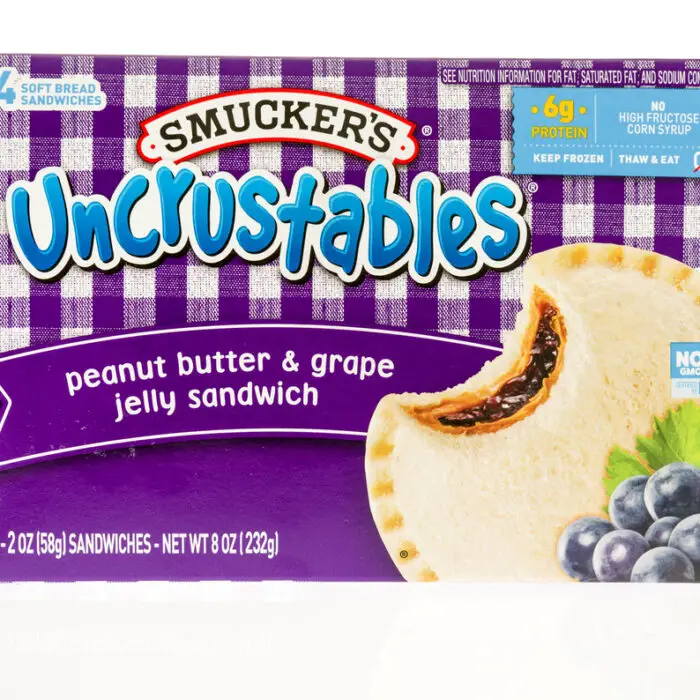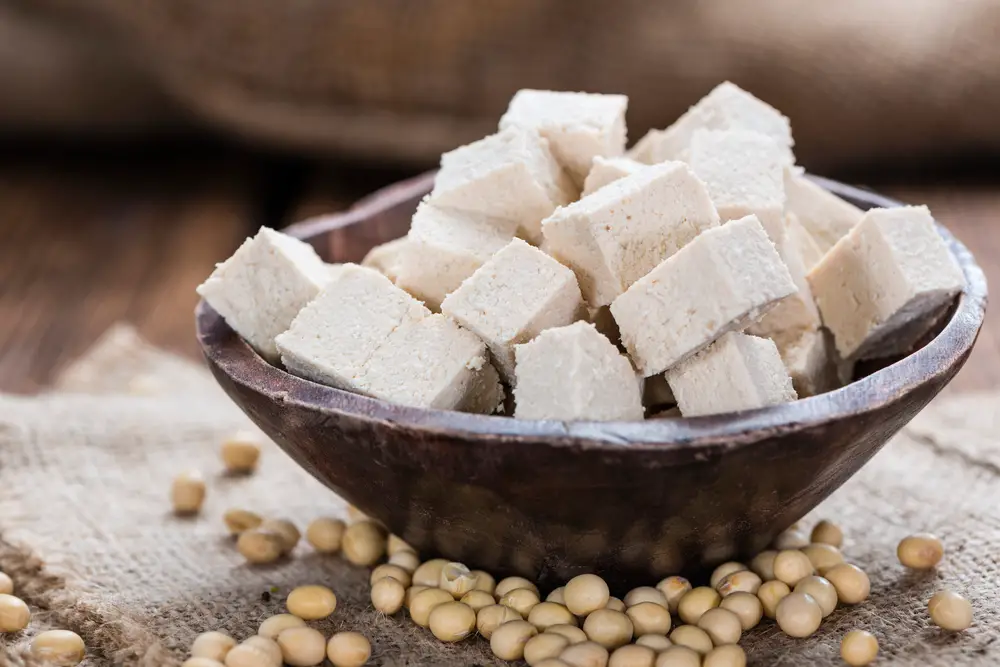Unlike regular mayo, vegan mayo contains no eggs. Yet, vegan mayo is a delicious substitute since it has the same rich flavor and texture. If you have wondered how to make vegan mayo, it’s very straightforward.
With just a handful of ingredients and a food processor, it takes a few minutes to whip up a creamy mayo for sandwiches, salads, or as an accompaniment for French fries.
Homemade Vegan Mayo: Easy Recipe
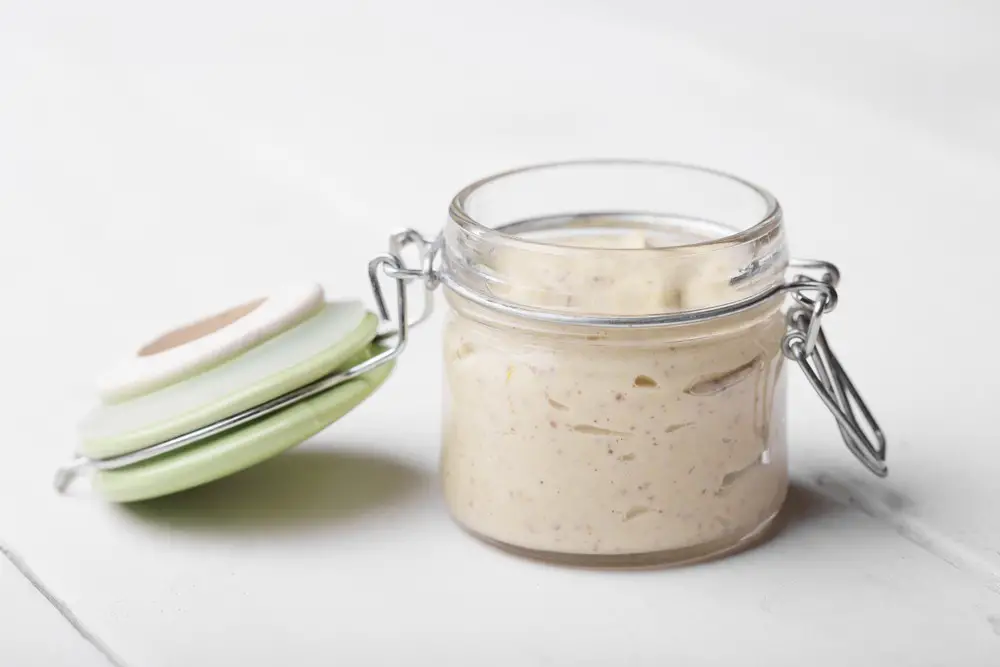
The base ingredient that substitutes egg in vegan mayo is soy milk or aquafaba. The remaining ingredients include vinegar, salt, lemon juice, maple syrup, and mustard. Here’s how to make vegan mayo at home with this easy recipe:
Easy Vegan Mayo
Ingredients
- ½ cup soy milk or ¼ cup aquafaba at room temperature
- 1 tablespoon vinegar – red, white, or apple cider
- ¼ t. fine sea salt
- ½ t. dry mustard of 1 ½ Dijon mustard
- 1 t. fresh lemon juice, optional
- 1 cup sunflower, grapeseed, or vegetable oil
- A drop of maple syrup or pinch of sugar, optional
Directions
- Add the soy milk (or aquafaba) to the food processor bowl and process until the liquid thickens (about one minute). With aquafaba, you may find insufficient liquid to process, making it necessary to move to the next step. You can also use an immersion or hand blender.
- At this stage, add the vinegar, salt, mustard, sweetener of choice, and lemon juice to the processor and blend everything for about half a minute. Stop processing.
- Use your spatula to get all the mixture from the sides into the bottom of the processing bowl.
- Start the food processor and slowly add a few drops of the oil at a time to ensure proper emulsification.
- Once the mixture begins to thicken (after using about a quarter of the oil), you can add the oil a bit faster but keep it at a thin stream.
- Stop the processor once all the oil is added to scrape its sides, and restart for a few more seconds.
- At this point, taste. If needed, add more salt or sweetener. If needed, process for a few more seconds.
- Your mayo is ready to serve. It will be kept in the refrigerator for up to three weeks in an airtight container. You may notice some liquid pooled at the top. That’s not a problem; mix it with a spoon and serve.
Aquafaba: The Secret Ingredient for Vegan Mayo
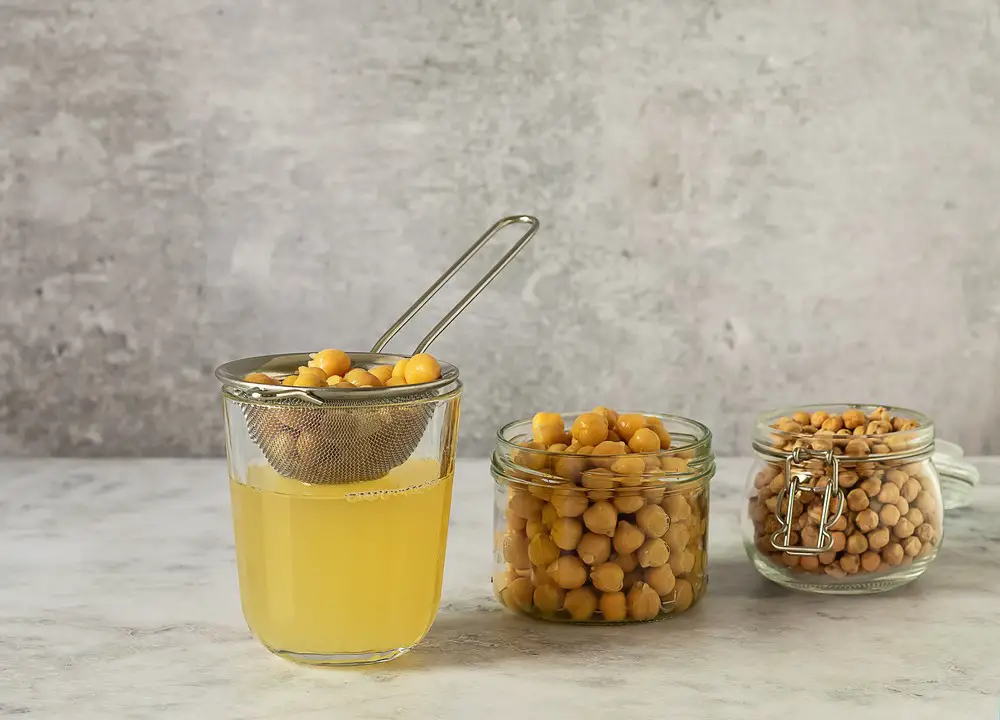 When cooking legumes, the cooking liquid becomes starchy, creating aquafaba. The best aquafaba for use in recipes is that from chickpeas because it has the most starch. If you don’t cook legumes at home, the best way to get aquafaba is from canned chickpeas.
When cooking legumes, the cooking liquid becomes starchy, creating aquafaba. The best aquafaba for use in recipes is that from chickpeas because it has the most starch. If you don’t cook legumes at home, the best way to get aquafaba is from canned chickpeas.
If you have been throwing that liquid away, you will probably want to kick yourself once you find out more about its uses in vegan cooking. Use aquafaba as an emulsifier, thickener, and binder. You can use it to replace eggs when making pancakes, meringues, and desserts. Use it to thicken soups or to create creamy mayonnaise, vegan butter, and hummus.
When buying tinned chickpeas for aquafaba, prefer the low or no-salt varieties. Otherwise, you may have oversalty results. Don’t add salt to your recipe if you can’t find low or no salt tinned chickpeas. Before opening a can of chickpeas to use the aquafaba, shake it a bit to release the starch into the liquid before draining and using it.
Getting the right cooking liquid consistency is important to make your aquafaba by boiling chickpeas. Start by soaking the chickpeas and cooking them. Remove the chickpeas from the pot once cooked to continue reducing the liquid separately. Boil them until the liquid resembles the consistency of egg white
Substitute aquafaba for eggs in recipes as follows:
- 3 tablespoons of aquafaba = 1 large egg
- 2 tablespoons of aquafaba = 1 egg white
Step-by-Step Guide: Making Vegan Mayonnaise
Now that you know how to make vegan mayo using basic ingredients, here’s a step-by-step guide to ensure you always get the whitest and creamiest results.
- You cannot add the oil before you first froth up the rest of the ingredients.
- Once you have a nice foamy mixture of soy milk or aquafaba, vinegar, lemon, mustard, etc., it’s time to add the oil. However, the trick is first to pour it in drop by drop.
- After about a quarter of the oil is in, pour the remaining oil into the mayo in a thin stream.
- Times are not very important in mayo making. It may take less or longer than the recipe. Healthy Living James blogger James Wythe advises relying on the mayo’s appearance. Here’s his take on Easy Homemade Vegan Mayonnaise.
The Best Vegan Mayo Recipe
All you need when learning how to make vegan mayo is a recipe, a blender, the ingredients, and five minutes. However, here are some variations that will turn it into the best vegan mayo recipe for your meals.
Nice ‘n Spicy Vegan Mayo
Delicious with French fries or potato wedges.
When making a spicy vegan mayo, don’t omit to add that little bit of sweetness to your other ingredients. All you need is about ½ a tablespoon of maple, agave, or other syrup.
Add hot sauce like tobacco, sriracha, or a few chipotle peppers in adobo if you like a smoky flavor.
Garlic complements the spicy flavor of hot mayo, so add a bit of garlic powder or ½ a clove of garlic when blending your mayo.
Garlic vegan Mayo (Aioli)
Add the following to your vegan mayo recipe:
- 1 to 2 cloves of mashed raw garlic or roasted garlic, depending on how strong a taste you want. It’s better to mash it to ensure a smooth mayo.
Other ideas for customizing vegan mayo include adding pesto, chipotle powder, and truffle oil.
Deliciously Creamy Vegan Mayonnaise
Once you know how to make vegan mayo, you will always have a jar in your refrigerator. Here’s a deliciously creamy vegan mayonnaise using raw cashews that will become an essential and healthy addition to your meals.
Creamy Vegan Mayonnaise
Ingredients
- 1 cup raw cashews
- ¾ cup oil (sunflower works well)
- ¼ t. Dijon mustard
- ¼ t. salt
- ½ t. black pepper
- ⅕ t. ground turmeric (for some color)
- 1½ t. lemon juice
- 1 t. maple syrup
Instructions
- Rinse the cashews and soak them in warm water for 30 min. Drain and set aside.
- Place the cashews, mustard, salt, syrup, turmeric, and black pepper in the mixing bowl of the food processor or blender.
- Blend until it resembles a coarse mixture.
- Pause to add the lemon juice, and mix slightly.
- Slow the blender’s speed and slowly pour the oil in until it has emulsified completely.
- Finally, add two teaspoons of water to create a thick, creamy, smooth mayo consistency.
- Refrigerate in an airtight container for about ten days or freeze for up to three months.
Vegan Mayo 101: Mastering the Basics
Mastering the basics of making vegan mayonnaise is easy. Knowing how to make vegan mayo is simple with this vegan mayo 101:
- Immersion blenders and food processors work better than regular blenders.
- Neutral-flavored oils like sunflower are better than stronger ones like olive oil. Remember that you can use coconut oil, but it does tend to solidify when cooled.
- Always use the ingredients at room temperature to make it easier for them to emulsify.
- Most recipes call for plant-based milk, but you can substitute the milk with aquafaba.
- Use vinegar, lemon juice, or a bit of both for their tanginess and flavor.
- You can add seasoning like pepper or oregano for more flavor.
- Mayo thickens when placed in the refrigerator, so make it slightly runnier than desired to get the right consistency.
- Adjust the mayo’s consistency by adding more oil if it’s too runny or more milk if it’s too thick.
Whip Up Vegan Mayo in Minutes
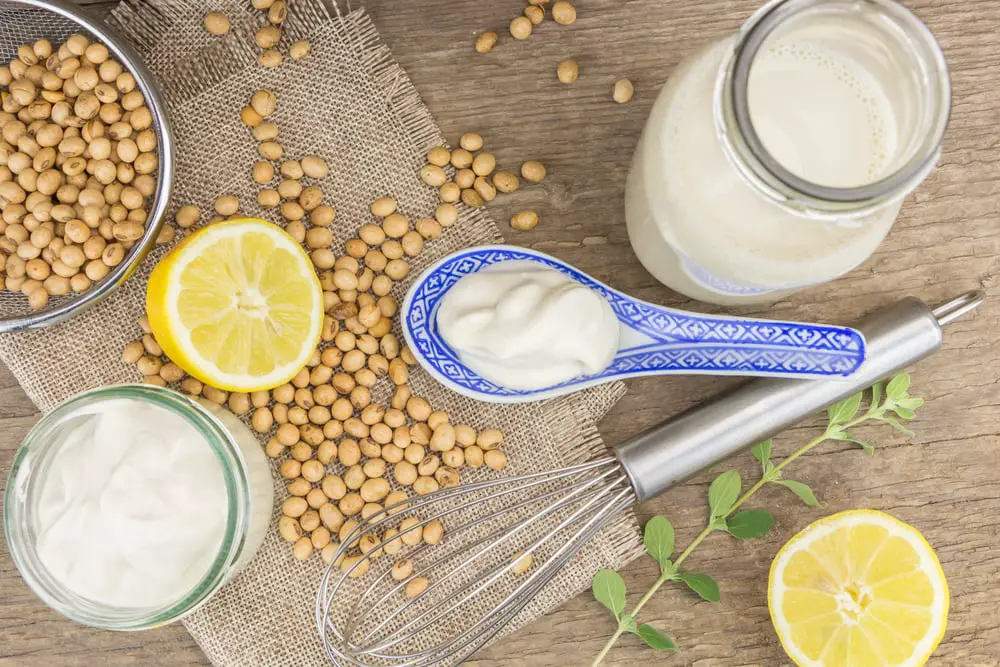 The best thing about making vegan mayo at home is that you need only a handful of ingredients and can have it ready in minutes. Once you learn how to make vegan mayo, you will always have a jar in your fridge to whip up a sandwich, coleslaw, or dressing a salad.
The best thing about making vegan mayo at home is that you need only a handful of ingredients and can have it ready in minutes. Once you learn how to make vegan mayo, you will always have a jar in your fridge to whip up a sandwich, coleslaw, or dressing a salad.
If you don’t like using oil in your food or have a soy allergy, you’ll be happy to know that you can whip up a vegan mayo in no time with substitute ingredients.
For example, you can substitute soy milk with other plant-based milk, including oat or almond milk. You can also use aquafaba to replace the milk. You can also omit the mustard from your vegan mayo recipe, even though it’s a good emulsifier.
Finally, you can substitute the oil in your recipe with any vegetable oil of choice, for example, olive oil, avocado oil, or coconut oil. If you don’t want oil in your mayo, why not try this vegan mayonnaise from Dianne’s Vegan Kitchen containing silken tofu? You’ll be happy to know it only has 2 calories per serving.
Elevate Your Dishes with Vegan Mayo
Now that you know how to make vegan mayo, here’s how to elevate your dishes with it:
- Combine vegan mayonnaise into salad dressings for flavor and thicker texture.
- Mix the mayo with finely grated carrots and mixed cabbages for a delicious slaw.
- Create a vegan pesto for pasta with basil and mayo.
- Make a vegan “tuna” sandwich by microwaving a sweet potato, mashing it, and adding herbs and mayo.
- Spread on bread or wrap, add sliced tomatoes and cucumbers for a refreshing lunch option.
- Use it on buns when making vegan burgers.
- Create delicious sauces like chipotle or aioli.
- Make dips to serve with grilled veggies, fried eggplants, French fries, or dipping sticks.
Just a few ingredients from your cupboards can yield a delicious vegan mayo to accompany your meals. Whip up a batch today and enjoy!




